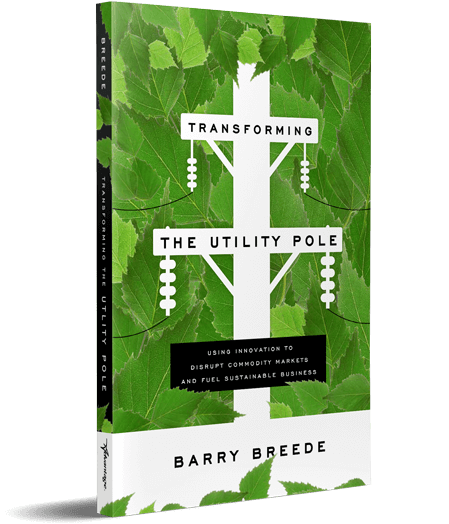Utilities want to reduce waste; the EPA wants to reduce landfill usage; and everyone wants to find an environmentally friendly way of disposing of this treated wood waste. That is where a shift in look at this product’s “end of life” needs to occur. What if the utility pole’s life didn’t need to end per se, just be repurposed into something else?
This mindset is in part what drove our desire to provide an alternative “disposal” option for utilities. Our message was not to say, “Don’t worry about it, we’ll load that stuff into a dumpster and drive it to the landfill for you.” Our first focus was on finding things to do with the material besides just putting it in a landfill – to repurpose it.
Shifting from Linear to Circular
Most business models are linear – that’s what has traditionally been done in many industries including the utility pole business. The problem with that approach is current disposal methods (which come at the end of a linear business model), lead to significant costs (financial or environmental) and obstacles to implementation. From a life cycle perspective for utility poles, we keep running into a wall at the end of the process, which moves from development of the raw material (tree growth), manufacture (cutting and treatment), use, and finally disposal. You grow the tree, you harvest the tree, you manufacture it, it goes up in service, and then ultimately it gets disposed of one way or another. It’s that last step, the end of the line, that has historically presented difficulties.
I’m sure that is the case in many industries; if the ability to repurpose were easy, it’s likely we’d all be doing it. However, just because it is not currently easy, doesn’t mean creating a circular business model isn’t possible or worth it.
Don’t Waste “Waste”
Choosing to not shift to a circular life cycle is leaving assets on the table. If we view the product life cycle as a stream flowing from design, through production and use, to disposal, the intervention of the circular economy is to divert the stream at the point of disposal and cycle back to a point upstream. In other words, rather than just treating the remaining raw material at the end of the process as waste to be gotten rid of, companies have the opportunity to innovate by closing the loop and turning that material into input at an earlier phase of the process.
By seeking to repurpose and transform your linear business model into a circular one, you can not only make a positive impact on the environment, but on your business’s bottom line.

